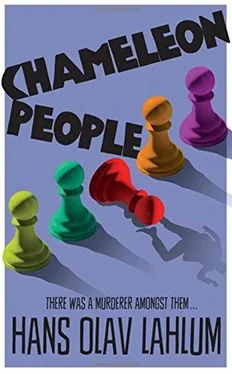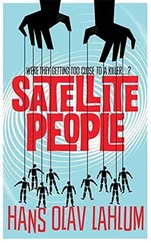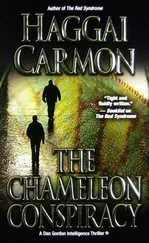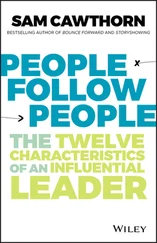Just as we stopped outside the police station, I turned to the arrestee and again asked why he had come to my door. A glimmer of interest sparked in his eyes.
‘You were the only person in the world I hoped might believe me,’ he stammered in a quiet voice.
Then he seemed to lose both his voice and interest again. He had nothing more to say about the case. All the questions he was asked later that evening remained unanswered, including any about his name. And he shook his head feebly when asked if he would like a lawyer or to contact his family.
The suspect’s identity was not confirmed that first evening. It was perfectly clear that he came from a very different background from the multi-millionaire Per Johan Fredriksen. But where the mysterious boy actually came from was not established. He did not say a single word more and no one called in to say that their teenage son was missing.
Once the arrestee had been locked up in a cell, I stood for a couple of minutes and looked at the red Coop bike, marked ‘Item of Evidence 2’. The bicycle, like its owner, was not a particularly impressive sight. Several spokes were broken, the seat was loose and the tyres were worn down. If I had a teenage son, I would certainly not let him out on the streets of Oslo on such a rickety old thing.
One could hardly expect a murderer to have ID with him. But my curiosity regarding the boy’s name, background and motive was further piqued by the fact that he did not have so much as a penny in his pocket, or anything else other than a bloody kitchen knife.
I called my boss, and was immediately given the necessary authorization to continue investigating the case. He expressed his relief that the culprit had already been caught.
I wrote a press release to confirm that the politician Per Johan Fredriksen had been stabbed and killed on the street, and that the case was as good as solved now, following the arrest of a young man with a knife who had fled the scene of the crime. I chose to say ‘as good as’ as something felt awry, but for want of more information, I could not put my finger on what exactly it was.
At a quarter to eleven, I ventured back out into the night. I took with me the young suspect’s puzzling statement that I was the only one in the world he hoped might believe him.
I was at home in my flat again by five past eleven. I got hold of Miriam, thanks to the newly installed telephone at the student halls of residence, and quickly updated her on my unexpected visitor. She was naturally very curious and asked about the boy on the bicycle, but did not know him either. For a moment it almost sounded as though she regretted going to the demonstration, as it meant that she had missed the evening’s drama.
‘That does not sound good for the poor young boy. And his explanation “when I went back” is linguistically rather odd, as well,’ she remarked pensively.
It was by no means the first time I had heard Miriam comment on a linguistic detail. This time, however, I understood what she meant, and was immediately interested.
The young arrestee’s use of the word ‘back’ meant that he had, in fact, left the spot after an earlier meeting with Fredriksen, only to then return and find the body. There was nothing at present to disprove that this was what had happened, and that he had then taken the knife with him in his confusion when he left the scene of the crime. If this was the case and Fredriksen had passed the young cyclist there and carried on, then it was odd that, only minutes later, he was lying in almost precisely the same place.
I wished Miriam a good night and put down the phone, then stood there deep in thought, my hand still on the receiver.
I had remembered by heart the number of the telephone on the desk of Patricia Louise I. E. Borchmann, my invaluable advisor. I seriously considered ringing to tell her about what had happened, but then decided that it was a little too late in the evening and the case was more or less concluded.
But underlying this was also the fear of how she might react if I called. At the end of our third murder investigation together in the summer of 1970, the drama of Miriam’s near-death experience had coincided most unfortunately with the death of Patricia’s father. She had only helped me by phone during my fourth murder investigation, and we had met a few times in the course of my fifth and sixth investigations over Christmas 1971. As I understood it, Patricia had then hoped to hear very different news about my relationship with Miriam, and certainly not the announcement of our engagement on New Year’s Eve. I had not spoken to Patricia since then.
The uncertainty as to where Patricia and I now stood had hung over my otherwise charmed existence like a dark cloud. But a situation had not yet arisen that made it necessary to find out – I had had no good reason to contact her again.
However, now that a good reason had, quite literally, come knocking at my door, I chose to delay the matter. I still felt not only deeply uncertain, but also alarmed at the thought of what Patricia’s reaction might be. I could not imagine that she would in any way wish to be more public about anything. But it had struck me more than once that the consequences for my career would be catastrophic, should anything unintentionally provoke Patricia to say just how much I had told her about my murder cases, and the extent to which she was responsible for solving them.
I would have ample opportunity over the course of the next eight days to regret the fact that I had not immediately phoned Patricia following the events of Saturday, 18 March 1972. But I was as yet unaware of this. I fell asleep around midnight, having pondered some more on the boy with the red bicycle and his almost manic wish to talk to me, and somewhat odd use of the word ‘back’.
DAY TWO: A Puzzling Suspect – and an Old Mystery
It was ten past nine on Sunday, 19 March 1972. Following an early breakfast, I was now sitting in an interview room at the main police station, opposite the young lad we all presumed was the murderer.
I asked for a third time if he wanted a lawyer or to talk to someone from social services.
Again, he dismissed my question with a flap of his thin hand, which otherwise remained flat on the table between us.
The first two times I asked what he was called, he just gave me a condescending look and did not answer. The third time he replied with a heavy lisp: ‘You’ll find out soon enough.’
We still had no idea who the mysterious boy was. He had nothing with him to give any indication of his identity. No parents, or anyone else, had called to enquire after him. His fingerprints had not been recognized in any records.
It was clear that the boy on the red bicycle heard my questions and could make himself understood, despite his speech impediment. His attitude to me seemed to be positive. And yet he just sat there and stared at me, his face completely blank. And he continued to do this when I asked, yet again, where he lived and what his parents’ names were.
I went a step further and asked: ‘You said yesterday that he was dead when you came back. Does that mean that you spoke to him, then went away, only to return and find him dying with a knife in his chest?’
The boy nodded. There was a faint glow in his eyes.
‘In which case, why did you take the knife with you? And why did you then come to me?’ I asked.
The glow in his eyes went out. He looked at me with a resigned, almost patronizing expression. There was something reprimanding in his look, but I could not understand why. I started to wonder whether I was dealing with an imbecile, or if this was an intelligent person who, for some unknown reason, did not want to say anything.
Читать дальше












